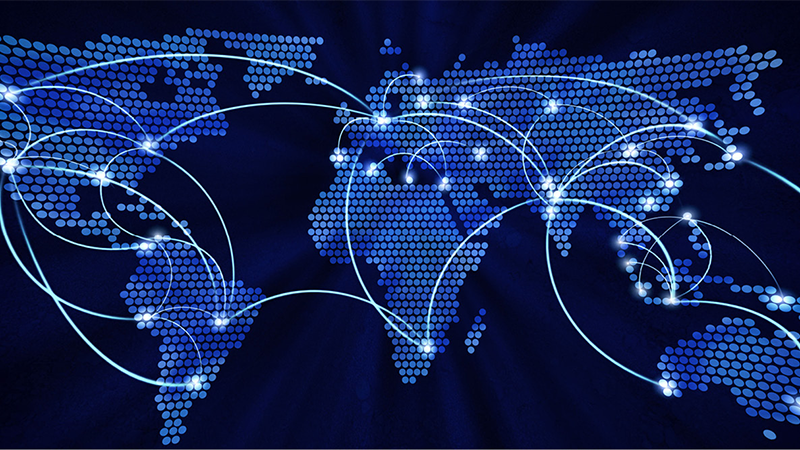At the forefront of international trade discussions lie the artful maneuvers of tariff negotiation strategies. It’s a strategic ballet where nations jostle for advantageous positions, seeking to protect domestic industries while fostering an environment conducive to global trade.

Short sentence alert: Tariff negotiation strategies are akin to a diplomatic chess game, where each move holds consequences that resonate far beyond national borders.
Navigating this terrain demands a nuanced understanding of economic intricacies. The chessboard is not only the market but the intricate web of political considerations and global supply chain dynamics.
Global Commerce Regulations: The Regulatory Symphony
Beyond the realms of agreements and negotiations, the symphony of global commerce resonates with the harmonies and dissonances of global commerce regulations. These regulations are the silent conductors shaping the flow of goods and services, dictating the rules of engagement in the grand theater of international trade.
From safety standards to intellectual property rights, the spectrum of global commerce regulations is vast and intricate. In 2023, the emphasis on sustainability and ethical practices casts a shadow over the regulatory landscape, challenging nations and businesses to adhere to a higher standard.
The Regulatory Tightrope Walk
Walking the tightrope of compliance, nations and corporations must balance the quest for economic prosperity with the imperative of responsible global citizenship. It’s a precarious walk where missteps can lead to not only financial repercussions but also tarnished reputations on the international stage.

Long sentence alert: Global commerce regulations are not merely a set of bureaucratic guidelines; they are the architects of a new era of responsible, transparent, and equitable international trade.
Bilateral Trade Deals 2023: A Focus on Specifics
Zooming in from the panoramic view of international agreements, the spotlight shifts to bilateral trade deals in 2023. These one-on-one agreements, though seemingly narrow in scope, often carry profound implications for the participating nations.
In a world where economic interdependence is the norm, bilateral trade deals become the precision instruments that fine-tune the economic relationships between two nations. It’s a bespoke approach to international trade, where the unique needs and aspirations of each partner are carefully considered.
The Tapestry of Economic Interconnectedness
In the realm of bilateral trade deals, the threads of economic interconnectedness are woven into a tapestry that reflects the shared goals and challenges of the participating nations. These agreements go beyond mere transactions; they are the building blocks of enduring partnerships.
Short sentence alert: Bilateral trade deals are the intricate knots in the vast fabric of global commerce, each one contributing to the resilience and flexibility of the entire system.
Conclusion: Trade Agreements and Tariffs 2023
As we conclude our exploration of international trade agreements, tariff negotiation strategies, global commerce regulations, and bilateral trade deals in 2023, the prevailing winds of change beckon nations to adapt, innovate, and collaborate.
The world of trade is not a stagnant pond; it’s a dynamic ocean where the currents of diplomacy, regulation, and strategy converge. In 2023, navigating these waters demands more than a compass; it requires a keen understanding of the intricate dance between nations, economies, and the evolving expectations of a globalized society. As we sail into the future, the echoes of trade agreements and tariff negotiations continue to shape the destiny of nations, creating ripples that extend far beyond the shores of economic discourse.
Trade agreements and tariffs 2023, in the intricate web of global commerce, 2023 unfurls a tapestry of challenges and opportunities, itad services spotlighting the dynamics of international trade agreements, the nuances of tariff negotiation strategies, the undercurrents of global commerce regulations, and the spotlight on bilateral trade deals. Let’s embark on a journey to decode the complexities that shape the landscape of trade in the current year.

Unraveling International Trade Agreements
The heartbeat of the interconnected global economy is often synchronized through the pulse of international trade agreements. These diplomatic entanglements transcend mere economic transactions; they are the arteries through which the lifeblood of commerce flows.
In 2023, the world will witness a dance of negotiation and cooperation, where nations engage in intricate agreements to bolster their economic ties. These compacts, whether regional or multilateral, harbor the potential to redefine the economic destiny of participating nations.
The Strategic Ballet: Tariff Negotiation Strategies
At the forefront of international trade discussions lie the artful maneuvers of tariff negotiation strategies. It’s a strategic ballet where nations jostle for advantageous positions, seeking to protect domestic industries while fostering an environment conducive to global trade.

Short sentence alert: Tariff negotiation strategies are akin to a diplomatic chess game, where each move holds consequences that resonate far beyond national borders.
Navigating this terrain demands a nuanced understanding of economic intricacies. The chessboard is not only the market but the intricate web of political considerations and global supply chain dynamics.
Global Commerce Regulations: The Regulatory Symphony
Beyond the realms of agreements and negotiations, the symphony of global commerce resonates with the harmonies and dissonances of global commerce regulations. These regulations are the silent conductors shaping the flow of goods and services, dictating the rules of engagement in the grand theater of international trade.
From safety standards to intellectual property rights, the spectrum of global commerce regulations is vast and intricate. In 2023, the emphasis on sustainability and ethical practices casts a shadow over the regulatory landscape, challenging nations and businesses to adhere to a higher standard.
The Regulatory Tightrope Walk
Walking the tightrope of compliance, nations and corporations must balance the quest for economic prosperity with the imperative of responsible global citizenship. It’s a precarious walk where missteps can lead to not only financial repercussions but also tarnished reputations on the international stage.

Long sentence alert: Global commerce regulations are not merely a set of bureaucratic guidelines; they are the architects of a new era of responsible, transparent, and equitable international trade.
Bilateral Trade Deals 2023: A Focus on Specifics
Zooming in from the panoramic view of international agreements, the spotlight shifts to bilateral trade deals in 2023. These one-on-one agreements, though seemingly narrow in scope, often carry profound implications for the participating nations.
In a world where economic interdependence is the norm, bilateral trade deals become the precision instruments that fine-tune the economic relationships between two nations. It’s a bespoke approach to international trade, where the unique needs and aspirations of each partner are carefully considered.
The Tapestry of Economic Interconnectedness
In the realm of bilateral trade deals, the threads of economic interconnectedness are woven into a tapestry that reflects the shared goals and challenges of the participating nations. These agreements go beyond mere transactions; they are the building blocks of enduring partnerships.
Short sentence alert: Bilateral trade deals are the intricate knots in the vast fabric of global commerce, each one contributing to the resilience and flexibility of the entire system.
Conclusion: Trade Agreements and Tariffs 2023
As we conclude our exploration of international trade agreements, tariff negotiation strategies, global commerce regulations, and bilateral trade deals in 2023, the prevailing winds of change beckon nations to adapt, innovate, and collaborate.
The world of trade is not a stagnant pond; it’s a dynamic ocean where the currents of diplomacy, regulation, and strategy converge. In 2023, navigating these waters demands more than a compass; it requires a keen understanding of the intricate dance between nations, economies, and the evolving expectations of a globalized society. As we sail into the future, the echoes of trade agreements and tariff negotiations continue to shape the destiny of nations, creating ripples that extend far beyond the shores of economic discourse.
Trade agreements and tariffs 2023, in the intricate web of global commerce, 2023 unfurls a tapestry of challenges and opportunities, itad services spotlighting the dynamics of international trade agreements, the nuances of tariff negotiation strategies, the undercurrents of global commerce regulations, and the spotlight on bilateral trade deals. Let’s embark on a journey to decode the complexities that shape the landscape of trade in the current year.

Unraveling International Trade Agreements
The heartbeat of the interconnected global economy is often synchronized through the pulse of international trade agreements. These diplomatic entanglements transcend mere economic transactions; they are the arteries through which the lifeblood of commerce flows.
In 2023, the world will witness a dance of negotiation and cooperation, where nations engage in intricate agreements to bolster their economic ties. These compacts, whether regional or multilateral, harbor the potential to redefine the economic destiny of participating nations.
The Strategic Ballet: Tariff Negotiation Strategies
At the forefront of international trade discussions lie the artful maneuvers of tariff negotiation strategies. It’s a strategic ballet where nations jostle for advantageous positions, seeking to protect domestic industries while fostering an environment conducive to global trade.

Short sentence alert: Tariff negotiation strategies are akin to a diplomatic chess game, where each move holds consequences that resonate far beyond national borders.
Navigating this terrain demands a nuanced understanding of economic intricacies. The chessboard is not only the market but the intricate web of political considerations and global supply chain dynamics.
Global Commerce Regulations: The Regulatory Symphony
Beyond the realms of agreements and negotiations, the symphony of global commerce resonates with the harmonies and dissonances of global commerce regulations. These regulations are the silent conductors shaping the flow of goods and services, dictating the rules of engagement in the grand theater of international trade.
From safety standards to intellectual property rights, the spectrum of global commerce regulations is vast and intricate. In 2023, the emphasis on sustainability and ethical practices casts a shadow over the regulatory landscape, challenging nations and businesses to adhere to a higher standard.
The Regulatory Tightrope Walk
Walking the tightrope of compliance, nations and corporations must balance the quest for economic prosperity with the imperative of responsible global citizenship. It’s a precarious walk where missteps can lead to not only financial repercussions but also tarnished reputations on the international stage.

Long sentence alert: Global commerce regulations are not merely a set of bureaucratic guidelines; they are the architects of a new era of responsible, transparent, and equitable international trade.
Bilateral Trade Deals 2023: A Focus on Specifics
Zooming in from the panoramic view of international agreements, the spotlight shifts to bilateral trade deals in 2023. These one-on-one agreements, though seemingly narrow in scope, often carry profound implications for the participating nations.
In a world where economic interdependence is the norm, bilateral trade deals become the precision instruments that fine-tune the economic relationships between two nations. It’s a bespoke approach to international trade, where the unique needs and aspirations of each partner are carefully considered.
The Tapestry of Economic Interconnectedness
In the realm of bilateral trade deals, the threads of economic interconnectedness are woven into a tapestry that reflects the shared goals and challenges of the participating nations. These agreements go beyond mere transactions; they are the building blocks of enduring partnerships.
Short sentence alert: Bilateral trade deals are the intricate knots in the vast fabric of global commerce, each one contributing to the resilience and flexibility of the entire system.
Conclusion: Trade Agreements and Tariffs 2023
As we conclude our exploration of international trade agreements, tariff negotiation strategies, global commerce regulations, and bilateral trade deals in 2023, the prevailing winds of change beckon nations to adapt, innovate, and collaborate.
The world of trade is not a stagnant pond; it’s a dynamic ocean where the currents of diplomacy, regulation, and strategy converge. In 2023, navigating these waters demands more than a compass; it requires a keen understanding of the intricate dance between nations, economies, and the evolving expectations of a globalized society. As we sail into the future, the echoes of trade agreements and tariff negotiations continue to shape the destiny of nations, creating ripples that extend far beyond the shores of economic discourse.
